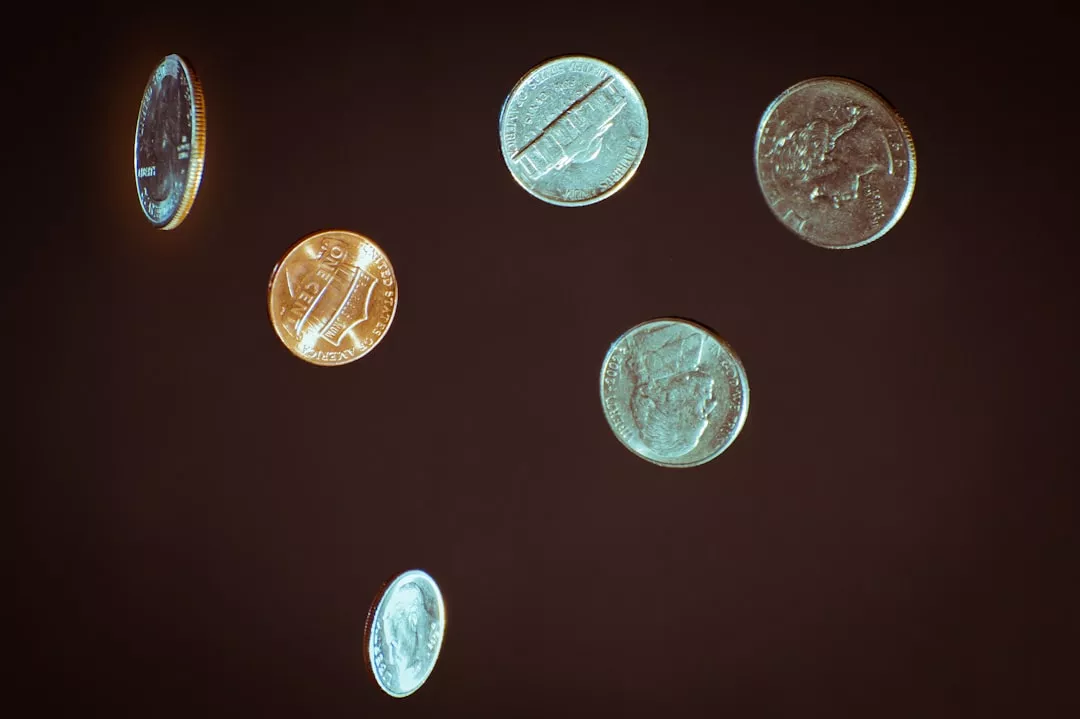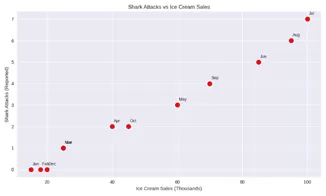Correlation and causation are two terms that are often used interchangeably, but they have very different meanings in the world of statistics. While correlation refers to a relationship between two variables, causation indicates that one variable directly causes a change in the other. It is important to understand the difference between the two, as confusing the two can lead to erroneous conclusions.
One such example of confusing correlation with causation is the link between ice cream sales and shark attacks. It has been observed that both of these increase together during the year, leading many to believe that there is a direct relationship between the two. However, this is a classic case of correlation not implying causation.
The statistical association between ice cream sales and shark attacks may be very clear, but it does not necessarily mean that one causes the other. There are a number of other factors at play that could explain the increase in both variables. For example, both ice cream sales and shark attacks tend to peak during the summer months when people are more likely to be at the beach. This could be due to the warm weather and school vacations, which make it an ideal time for families to go on beach trips and indulge in ice cream.
Moreover, the increase in ice cream sales and shark attacks could also be influenced by a third variable, such as tourism. During the summer, there is a surge in tourism to beach destinations, which could lead to a higher demand for ice cream and also increase the number of people in the water, thus increasing the likelihood of shark attacks.
Another important factor to consider is the concept of spurious correlation. This refers to a relationship between two variables that is purely coincidental and has no real causal link. In the case of ice cream sales and shark attacks, it is possible that the increase in both variables is simply a coincidence, and there is no actual relationship between the two.
It is also worth noting that correlation does not always imply a positive relationship. In some cases, two variables may be negatively correlated, meaning that as one increases, the other decreases. This does not necessarily mean that one variable causes the other to decrease; it could simply be a reflection of the complex nature of statistical data.
So, while it may be tempting to draw a direct connection between ice cream sales and shark attacks, it is important to approach the data with caution and consider all possible factors before jumping to conclusions. It is crucial to understand that correlation does not equal causation and that there could be a number of underlying factors influencing the relationship between two variables.
Furthermore, it is important to remember that correlation is only one aspect of statistical analysis and should not be considered as the sole determinant of a relationship between two variables. Other methods such as experimental studies and control groups are necessary to establish a causal link between variables.
In conclusion, the idea that ice cream sales cause shark attacks is a classic case of confusing correlation with causation. While it may seem logical to assume that there is a direct relationship between the two, it is important to consider all possible factors and not jump to conclusions based on a simple correlation. Statistical analysis is a complex and nuanced field, and it is crucial to approach data with caution and a critical eye. So, the next time you hear about a correlation between two variables, remember to look beyond the numbers and consider all possible factors before drawing any conclusions.



